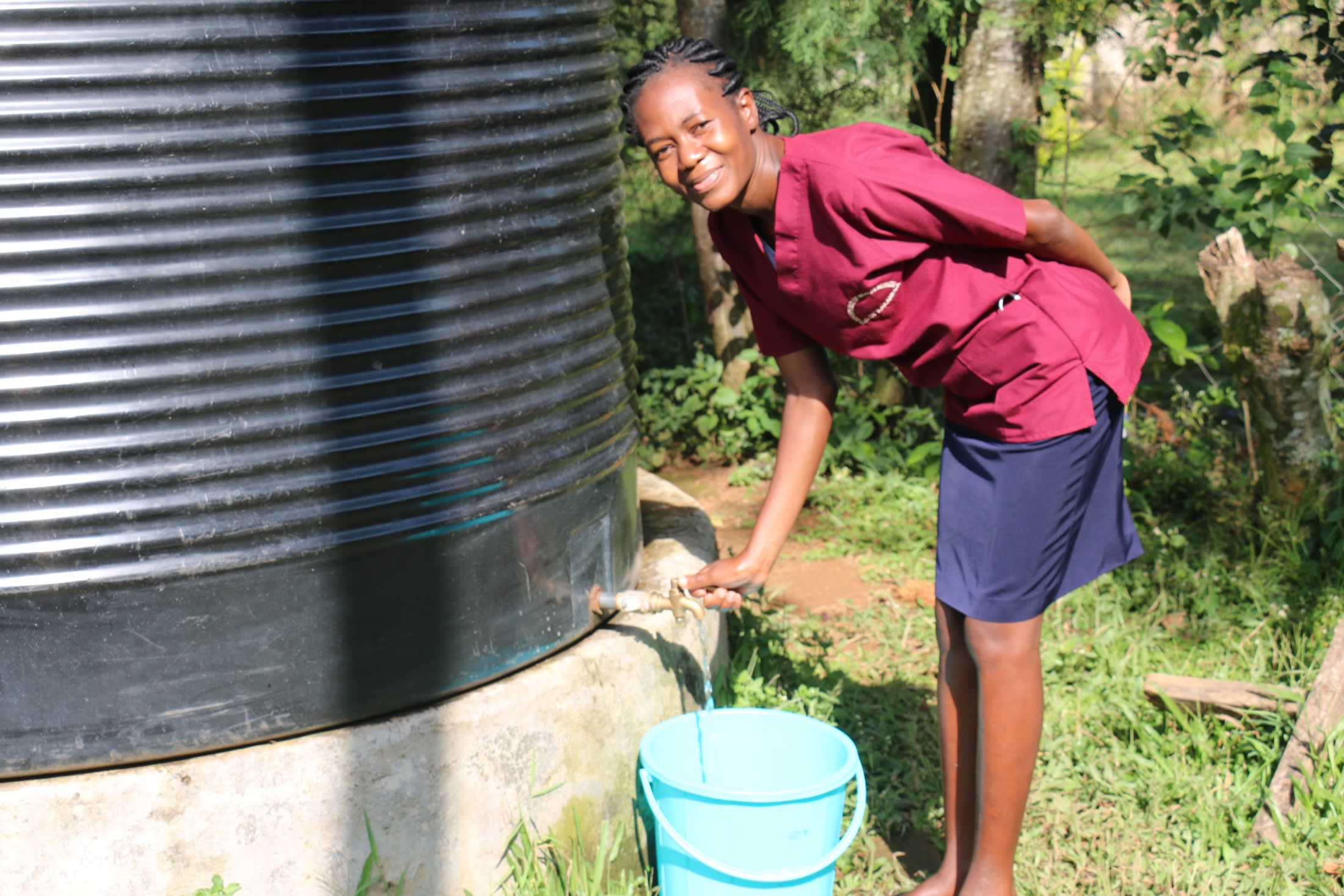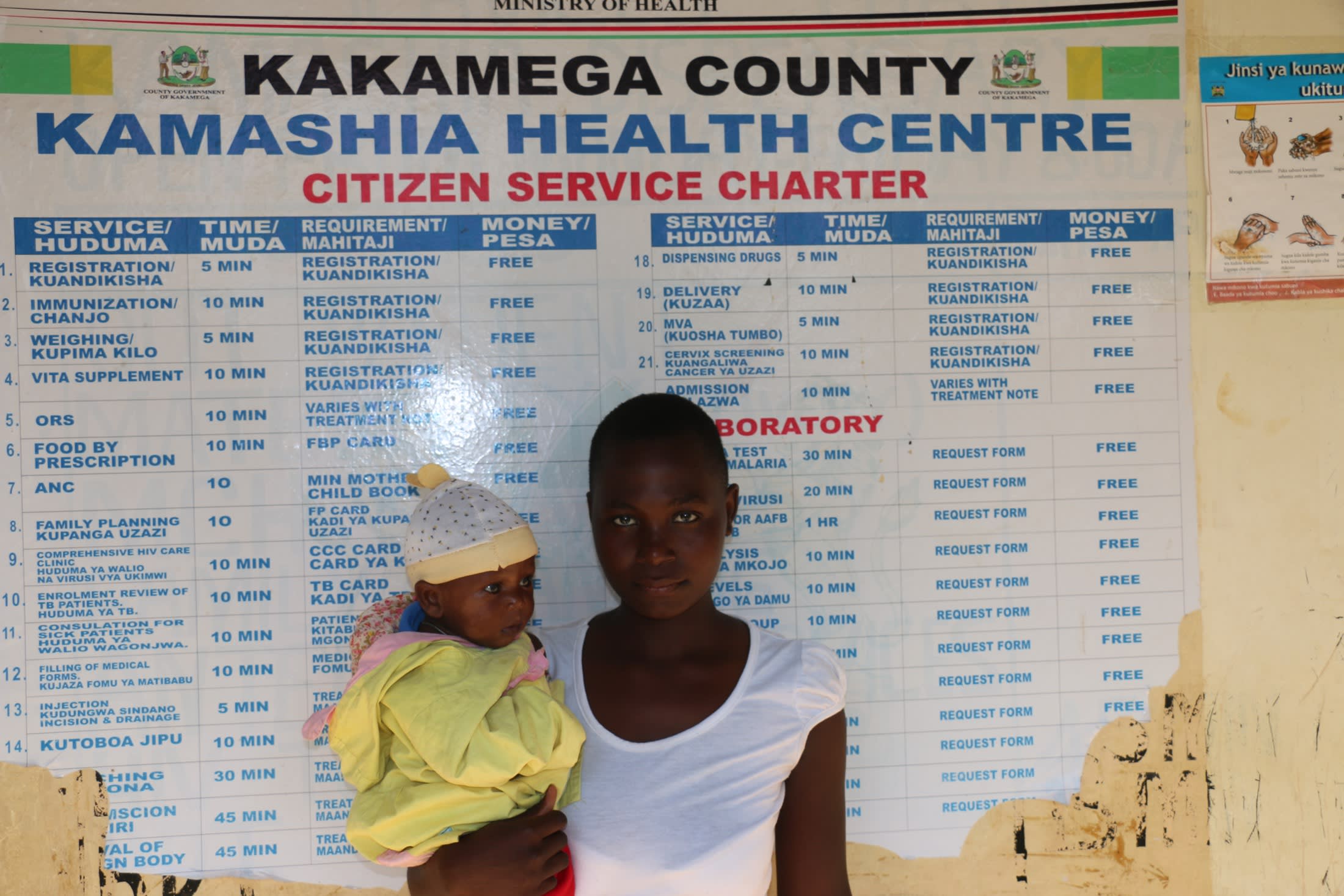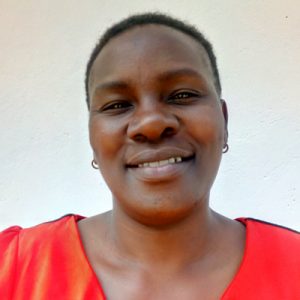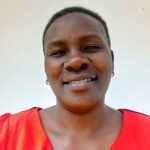Kamashia Health Center, a public facility serves a vital purpose as the place people can go when they require medical attention, both routine and emergent.
As a relatively small facility with only one inpatient bed, the center's staff work tirelessly to serve an average of 100 outpatients each day. The many different services offered include emergency, an HIV clinic, immunizations, maternity care, labor and delivery, minor surgery, nutrition, pharmacy, and a tuberculosis clinic.
It seems nearly impossible that many of these services could happen without adequate, safe water access. Still, there is no alternative, so the staff must care for those in need even without the water they desperately need.
Currently, the center relies heavily on rainwater collected in a tank on the campus that is treated regularly with chlorine and safe to drink. The water in the tank is only present after rain and undoubtedly runs out after the high demand each day. During the dry season, rain is scarce, making the water nearly nonexistent.
The only other water source is a nearby spring with water that is unsafe to drink and to use in medical procedures since it is open to all types of contamination.
Water is vital when dealing with medical issues, especially medical emergencies and imminent childbirth cases. Every day the staff wastes time looking for water before providing medical treatment. Sometimes, they have to travel to another, far away borehole to borrow water, which puts people's health and lives at risk.
Unfortunately, maternal and child mortality rates are unacceptably high in Kakamega county, with the largest rural population and the fourth most populous county in Kenya. There is a great demand for safe maternity and delivery services, so the government wants to expand the center's maternity unit to twenty beds soon. Therefore the need for clean, safe water that a borehole can provide is more pressing.

Beatrice Barasa (pictured above), a 30-year-old nurse at the facility, shared, "It slows everything for me [when I] am in charge and when there is no water. I have to handle both [collecting water and caring for the patient]. It makes me very tired."
Faith (in the photo below), a 20-year-old mother who lives near the health facility, told us her family does not have water to drink or use for their daily needs.

The borehole will serve the health center patients, staff who live and eat on the premises, and the community of 5,800 people that call Kamashia home, including community members like Faith.
What We Can Do:
New Well
We conducted a hydrogeological survey and the results indicated the water table here is an ideal candidate for a borehole well. Due to a borehole well's unique ability to tap into a safe, year-round water column, it will be poised to serve all of the water needs for this clinic's needs, even through the dry season.
The clinic will help collect the needed construction materials such as sand, rocks, and water for mixing cement. They will also provide housing and meals for the work team, in addition to providing local laborers. We will complement their materials by providing an expert team of artisans and drilling professionals, tools, hardware, and hand-pump. Once finished, the clinic will use water from the well and staff for drinking, handwashing, cleaning, and much more.
The clinic and we strongly believe that all of these components will work together to make the clinic easier to clean, which will aid in treatment and unlock the opportunity for patients and staff alike to live better, healthier lives.
Handwashing Stations
We will install two new handwashing stations and ensure they are kept clean and in working condition. The clinic staff will fill the handwashing stations with water daily and make sure they are always supplied with a cleaning agent such as soap or ash.
Training on Health, Hygiene, COVID-19, and More
We will hold a one-day intensive training session. This training will cover a wide range of topics, including COVID-19 symptoms, transmission routes and prevention; personal and environmental hygiene; and the operation and maintenance of the borehole and handwashing stations. There will be a special emphasis on handwashing.
Our team of facilitators will use various methods to train, including participatory hygiene and sanitation transformation and asset-based community development. We will also lead lectures, group discussions and provide illustrative handouts to teach health topics and promote good hygiene practices, including handwashing and water treatment. We will then conduct a series of follow-up training before transitioning to our regularly scheduled support visits throughout the year.

 Borehole Well and Hand Pump
Borehole Well and Hand Pump
 Rehabilitation Project
Rehabilitation Project


































